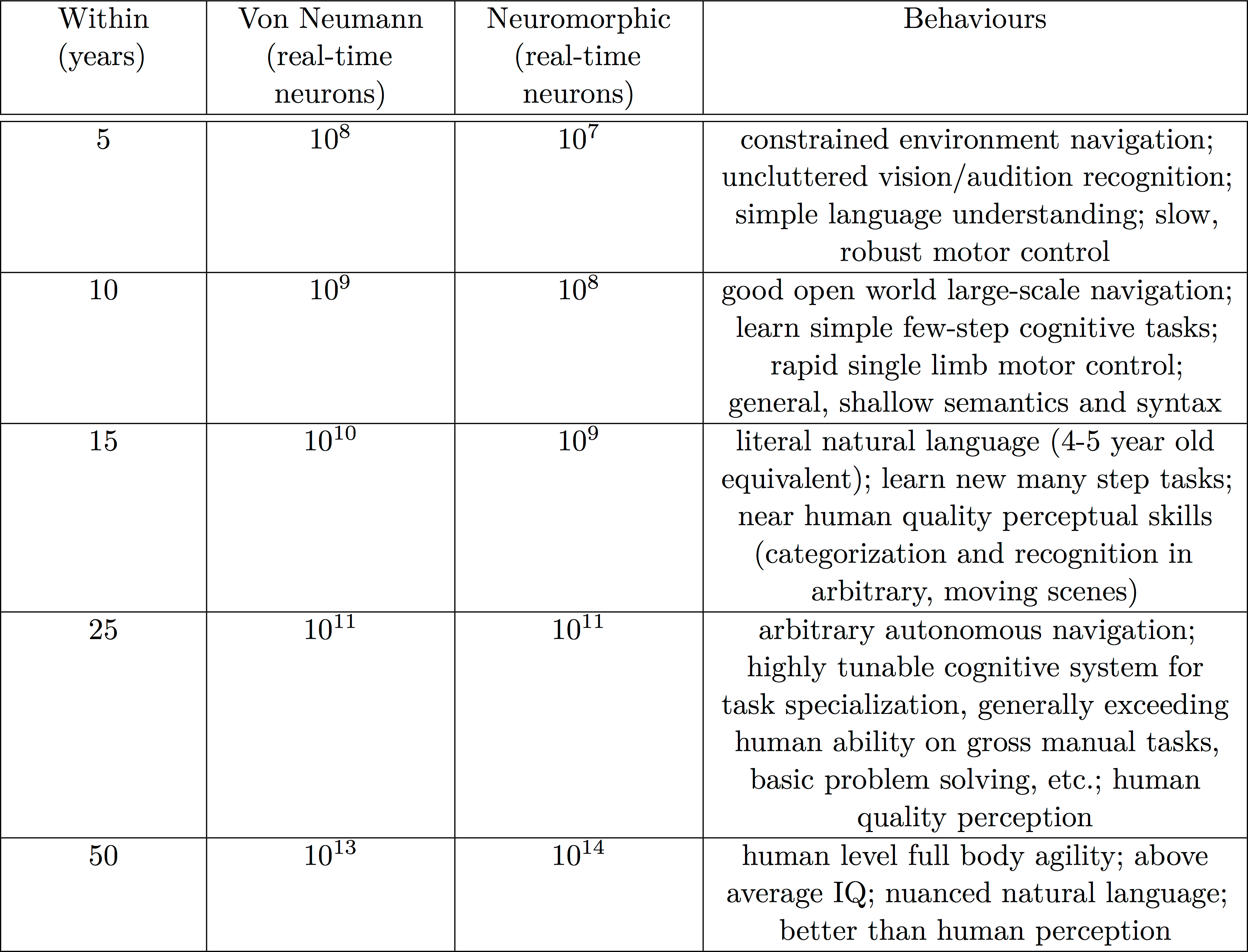5 A future timeline
Until this point I have been mustering evidence that there will soon be significant improvements in our ability to construct artificial cognitive agents. However, I have not been very specific about timing. The purpose of this section is to provide more quantification on the speed of development in the field.
In Table 1, the first column specifies the timeframe, the second suggests the number of neurons that will be simulatable in real-time on standard hardware, the third suggests the number of neurons that will be simulatable in real-time on neuromorphic hardware, and the last identifies relevant achievable behaviours within that timeframe.
I believe that several of the computational technologies I have mentioned, as well as empirical methods for gathering evidence, are on an exponential trajectory by relevant measures (e.g., number of neurons per chip, number of neurons recorded Stevenson & Kording 2011). On the technological side, if we assume a doubling every eighteen months, this is equivalent to an increase of about one order of magnitude every five years. I should also note that I am assuming that real-time simulation of neurons will be embedded in an interactive, real-world environment, and that the neuron count is for the whole system (not a single chip). For context, it is worth remembering that the human brain has about 1011 neurons, though they are more computationally sophisticated than those typically simulated in hardware.
Another caveat is that it is likely that large-scale simulations on a digital Von Neumann architecture will hit a power barrier, which makes it likely that the suggested scaling could be achieved, but will be cost-prohibitive in fifty years. Consequently, a neuromorphic alternative is most likely to be the standard implementational substrate of artificial agents.
Finally, the behavioural characterizations I am giving are with a view to functions necessary for creating a convincing artificial mind in an artificial body. Consequently, my comments generally address perceptual, motor, and cognitive skills relevant to reproducing human-like abilities.
Table 1
